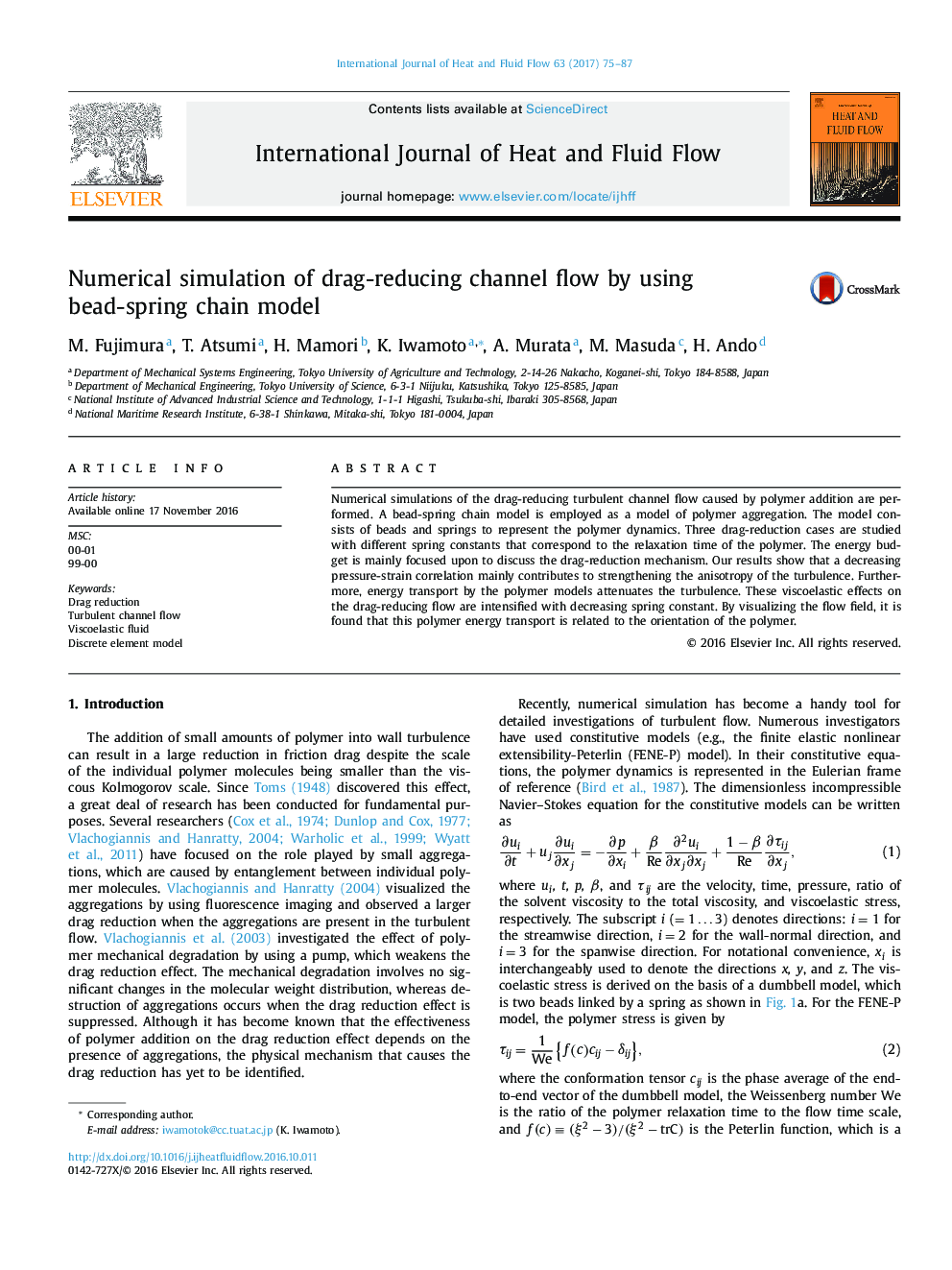| Article ID | Journal | Published Year | Pages | File Type |
|---|---|---|---|---|
| 4993296 | International Journal of Heat and Fluid Flow | 2017 | 13 Pages |
â¢Numerical simulations of drag-reduced turbulent flow by polymer additives were performed by using a discrete element model.â¢A decreasing pressure-strain correlation mainly contributes to drag reduction by polymer addition.â¢Energy transport by the polymer attenuates the turbulence.â¢The viscoelastic effects on the drag-reducing flow are intensified with increasing relaxation time of polymer.â¢The polymer energy transport is related to the orientation of the polymer.
Numerical simulations of the drag-reducing turbulent channel flow caused by polymer addition are performed. A bead-spring chain model is employed as a model of polymer aggregation. The model consists of beads and springs to represent the polymer dynamics. Three drag-reduction cases are studied with different spring constants that correspond to the relaxation time of the polymer. The energy budget is mainly focused upon to discuss the drag-reduction mechanism. Our results show that a decreasing pressure-strain correlation mainly contributes to strengthening the anisotropy of the turbulence. Furthermore, energy transport by the polymer models attenuates the turbulence. These viscoelastic effects on the drag-reducing flow are intensified with decreasing spring constant. By visualizing the flow field, it is found that this polymer energy transport is related to the orientation of the polymer.
